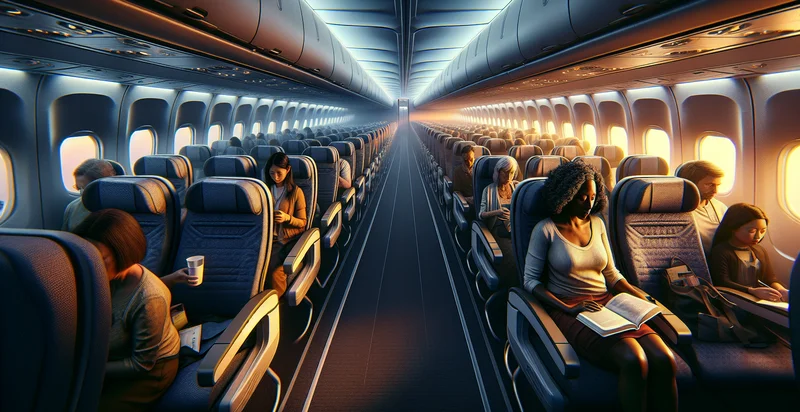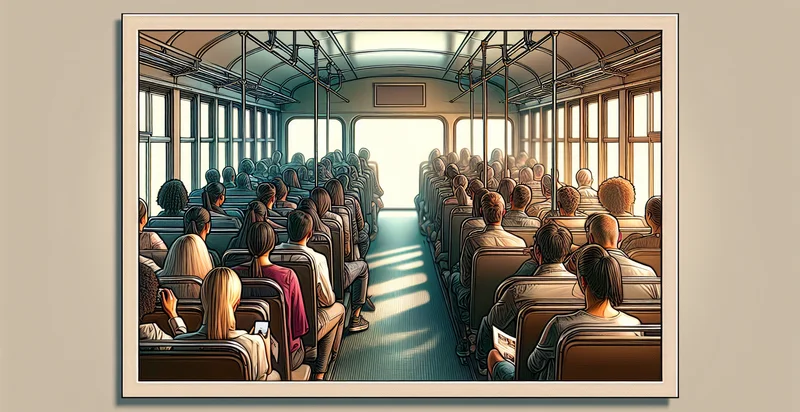Identify if back row seat is occupied
using AI
Below is a free classifier to identify if back row seat is occupied. Just upload your image, and our AI will predict if the back row seat is occupied - in just seconds.

Contact us for API access
Or, use Nyckel to build highly-accurate custom classifiers in just minutes. No PhD required.
Get started
import nyckel
credentials = nyckel.Credentials("YOUR_CLIENT_ID", "YOUR_CLIENT_SECRET")
nyckel.invoke("if-back-row-seat-is-occupied", "your_image_url", credentials)
fetch('https://www.nyckel.com/v1/functions/if-back-row-seat-is-occupied/invoke', {
method: 'POST',
headers: {
'Authorization': 'Bearer ' + 'YOUR_BEARER_TOKEN',
'Content-Type': 'application/json',
},
body: JSON.stringify(
{"data": "your_image_url"}
)
})
.then(response => response.json())
.then(data => console.log(data));
curl -X POST \
-H "Content-Type: application/json" \
-H "Authorization: Bearer YOUR_BEARER_TOKEN" \
-d '{"data": "your_image_url"}' \
https://www.nyckel.com/v1/functions/if-back-row-seat-is-occupied/invoke
How this classifier works
To start, upload your image. Our AI tool will then predict if the back row seat is occupied.
This pretrained image model uses a Nyckel-created dataset and has 2 labels, including Seat Empty and Seat Occupied.
We'll also show a confidence score (the higher the number, the more confident the AI model is around if the back row seat is occupied).
Whether you're just curious or building if back row seat is occupied detection into your application, we hope our classifier proves helpful.
Related Classifiers
Need to identify if back row seat is occupied at scale?
Get API or Zapier access to this classifier for free. It's perfect for:
- Airline Boarding Optimization: Airlines can utilize the back row seat occupation identifier to streamline boarding processes by prioritizing passengers seated in non-occupied back rows. This could reduce boarding time and enhance passenger flow, minimizing delays and ensuring a smoother airport experience.
- Real-time Capacity Management: Live monitoring of seat occupancy in venues like theaters or stadiums can help managers maintain optimal seating arrangements. If back row seats are found to be occupied, staff can dynamically adjust seating plans to maximize occupancy and enhance customer satisfaction.
- Ride-Sharing Efficiency: Ride-sharing apps can implement this identifier to better allocate vehicles based on passengers' seating preferences. If a back row seat is occupied, the app can prompt the system to suggest larger vehicles or carpools to accommodate more passengers comfortably.
- Automotive Safety Alerts: In vehicles equipped with smart technologies, identifying whether a back row seat is occupied can trigger safety alerts. For instance, if the system detects a child in the back seat, it can remind the driver to ensure all passengers are properly secured before driving.
- Event Seating Analytics: Event organizers can leverage this identifier to analyze attendee distribution throughout a venue. By understanding back row occupancy patterns, they can tailor future events to create a more balanced and engaging environment for guests.
- Public Transport Monitoring: Public transportation systems can integrate this function to monitor seat usage in real-time. Transit operators can use this data to adjust service frequency or vehicle size based on actual demand, improving overall efficiency and passenger comfort.
- Theater and Cinema Experience: Theaters and cinemas can enhance the viewer experience by identifying back row seat occupation during showtimes. If certain rows are consistently under-occupied, operators can implement promotional strategies to encourage bookings in those sections, ensuring better utilization of space.


